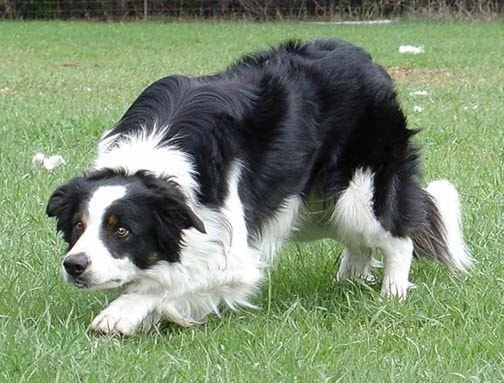With the City of Kimberley having now applied for a 48-hour trial permit to see how hazing might work in dealing with habituated deer within City limits, the question being asked is, what exactly is hazing?
Hazing may not be quite the correct term, says Coun. Darryl Oakley, who is the Council liaison to the deer management committee.
“A better term would be ‘aversive conditioning’,” Oakley said.
Aversive conditioning has been used in the Banff townsite since 2000 to deal with the elk population. It has also been used in Jasper on elk, and in Waterton on mule deer.
Simply put, dogs, under control of their handler at all times, drive deer out of town, or the human zone, into the non-human zone away from town. When they have the deer in an area well away from town, the dogs are called off.
“The dogs create pressure on the ungulates in the human zone and then release it when the deer are out of the human zone,” Oakley said. “These dogs are extremely well trained. It’s all they’ve ever done.”
John Zehnder of Invermere has worked on aversive conditioning in all three of the communities, and he is the dog handler who visited Kimberley and presented to the deer committee.
“He has toured Kimberley and found several areas where he believes the aversive conditioning would work, like Marysville,” Oakley said. “The deer have pathways they will take to move in and out of town. John will identify those pathways, then the dogs drive the deer out of Marysville and down into the valley, then they let them go.”
Repeatedly being driven out of town and into the same spot teaches the deer that they will be harassed in town, but are safe in the non-human zone.
“Waterton is about the size of Marysville. John would come in with his dogs and he’d have the deer moved out of town in about 20 minutes. With repetition, it got to the point that the deer would start to move as soon as they saw John’s truck.”
The first application to the government is asking for a 48-hour trial permit only. Obviously, that’s not enough to condition the deer, Oakley says, but he hopes it will be enough to demonstrate to Ministry of Environment people that it is possible to move deer out of town with a professional handler and his dogs.
“The 48 hours is just a demo for government,” he said. “Before we apply for the big piece that will allow an aversive conditioning program, they have to see it.”
Oakley is hopeful the Ministry will approve a more extensive hazing program, and that it can occur before fawning this spring. The aversive conditioning occurs every day for about five or six weeks.
“We do need to get them out of town before fawning. If they have their fawns out of town, they are more likely to stay out.”
Oakley also stresses that aversive conditioning is only a piece of an overall plan to control the deer population.
“The aversive conditioning deals with habituated animals, it’s not population control. Trapping emulates predation which is not here.”
